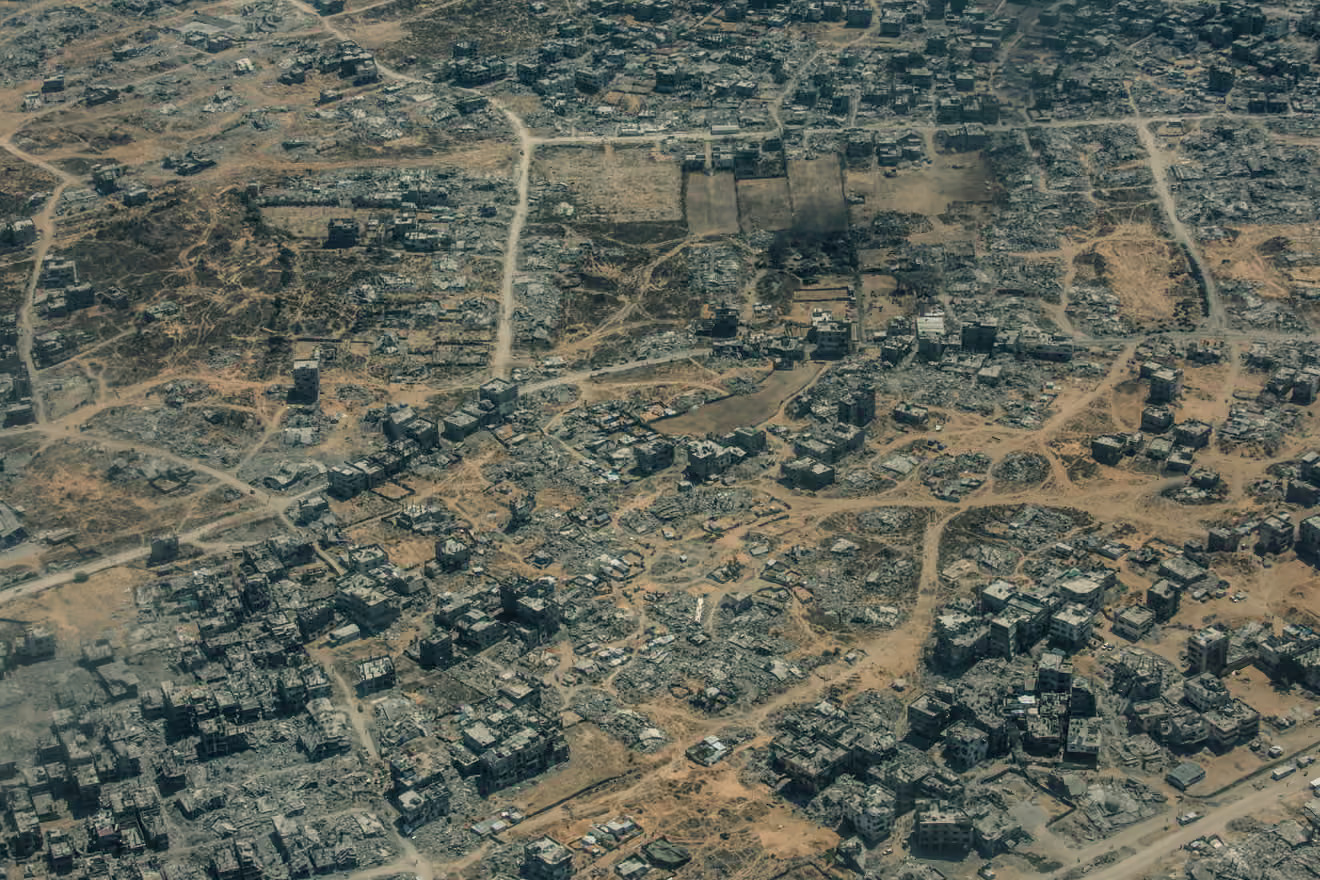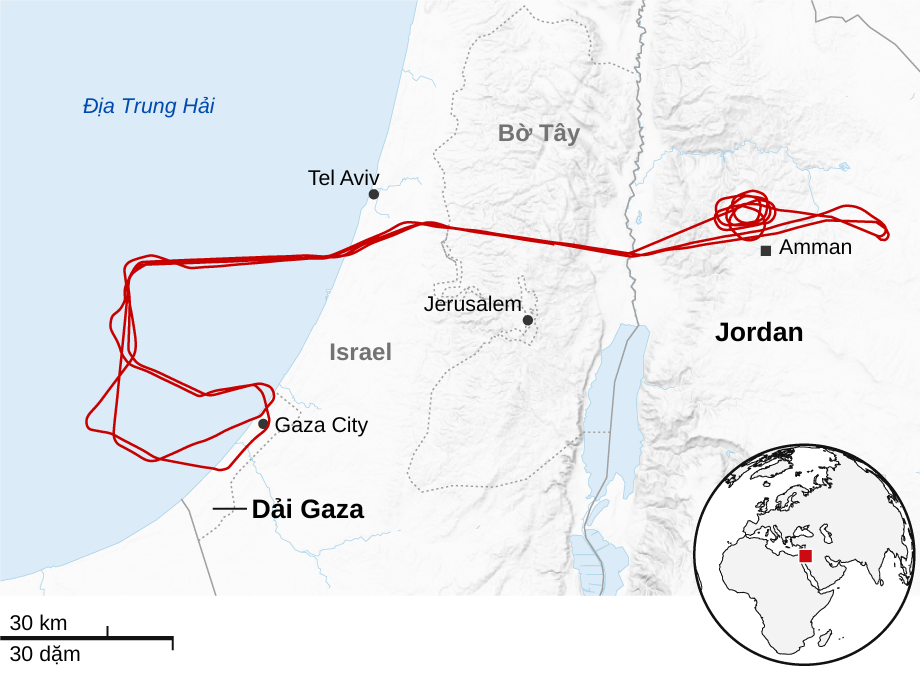Accompanying the Jordanian military on an aid drop mission, Guardian reporters had a rare opportunity to witness the devastation in the Gaza Strip, where residents face famine and horrific destruction from the war.
From above, the reporters described Gaza as resembling "the ruins of an ancient civilization, newly unearthed after centuries lost to the shadows," with shattered concrete slabs, collapsed walls, and neighborhoods pockmarked with bomb craters.
Less than two years ago, this was a vibrant land with bustling markets and streets filled with the sounds of children. The scene now "looks like a post-apocalyptic wasteland."
A Jordanian military plane drops aid into the Gaza Strip, 5/8. Video: Guardian
Last week, Israel announced the resumption of coordinated aid drops into the Gaza Strip by air, following international pressure over the crisis and famine.
The Guardian reporters were granted permission to board a Jordanian air force plane participating in a mission to drop three tons of aid on 5/8. After the outbreak of hostilities in 2023, Israel barred foreign journalists from Gaza, an unprecedented move in modern conflict, marking one of the few times the press has been denied access to a war zone.
Even from an altitude of 600 m, the scars of conflict were evident at locations associated with the most intense fighting.
 |
An urban area in the northern Gaza Strip, 5/8. Photo: Guardian |
An urban area in the northern Gaza Strip, 5/8. Photo: Guardian
About 90 minutes after takeoff, the Jordanian plane flew over northern Gaza and Gaza City, now a dusty expanse of rubble.
Entire residential areas have been flattened, with almost no signs of human life. Only through a camera lens could the reporters spot a small group of civilians standing amidst the debris.
Near the Nuseirat refugee camp, the plane's rear door opened, and aid packages attached to parachutes slid out.
The Jordanian military has coordinated hundreds of such aid drops into the Strip, delivering a total of 325 tons of supplies.
However, this aid is considered a "drop in the ocean" as famine spreads across Gaza. According to the Guardian, using planes to drop aid is generally expensive and less efficient than trucks.
Some locations in the Gaza Strip before and after the conflict. Video: Guardian
Seen from above, the Gaza Strip is tiny, home to more than two million people before the war. Four times smaller than London, the area has recorded over 60,000 deaths since the beginning of the conflict, with thousands buried under the rubble.
A few hundred meters below the reporters was their colleague, Malak A Tantesh. Most Guardian journalists have yet to meet Tantesh due to the Israeli blockade. She has lost her home, relatives, and friends in the conflict and is living with shortages of food and water.
As the plane turned back towards Jordan, a soldier pointed south: "That's Rafah." A few kilometers east, among the cratered hills, is where a convoy of Palestinian ambulances was attacked by the Israeli military on 23/3. Fifteen medical and rescue personnel were killed. They were later buried in a mass grave.
 |
Flight path of the Jordanian aid plane on 5/8. Graphic: Guardian |
Flight path of the Jordanian aid plane on 5/8. Graphic: Guardian
After landing at Ghabawi Air Base, Jordan, the reporters wondered, "When will we see Gaza again? And after witnessing the Strip become a wasteland of brick, stone, and graves, what more is there to destroy, when almost everything is gone?"
Duc Trung (According to Guardian, AFP, AP)












